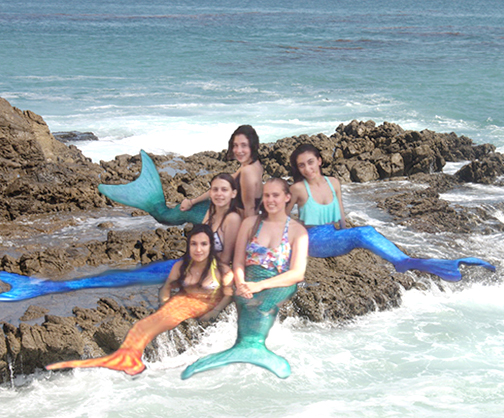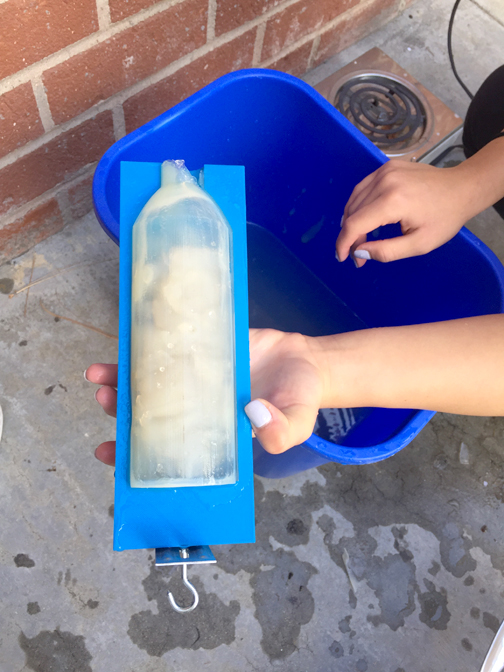
More than 100 participants descended on Deukmejian Wilderness Park on Oct. 11 as part of the EcoNarcs 4.0 project.
By Charly SHELTON
Each year, the Environmental Geographic Information System class at Clark Magnet High mounts an ambitious project – to spread awareness of environmental problems and make a difference in environmental protection in real-world situations. This goes beyond just a class assignment; it is affecting positive change in the world.
“The project is important to the kids and they choose the subjects,” said Dominique Evans-Bye, EGIS class teacher at Clark. “It gives them a chance to really do something positive for the environment. They identify an issue and they come up with a solution, something to make it better.”

The project is presented through the Lexus Eco Challenge, a nationwide program for grades six through 12 that invites students to enter their action plans for solving an ongoing environmental problem affecting their area. The EGIS class is split into four teams, each one entering their own action plan for their own problems identified in the LA area.
The MERmaids, a group of five girls in the EGIS class, saw the problem of Marine Environmental Restoration (MER), and their action plan is to spread awareness at the beach. So they dressed as mermaids and took photos underwater, then photoshopped in sea animals that have been injured by marine debris and reminders to properly discard trash. These have been made into posters and will be used by the Adopt-A-Beach program to cover trashcans on Dockweiler State Beach.

Team Fresh is examining water quality of the LA River by seeing what kind of bugs live there. Leaf packs, mesh bags of dead leaves, are used to create a home for macro invertebrates – snails, worms, dragonfly larva, etc. The packs will stay at the LA River for a month and then be collected to see what kind of bugs have moved in. If the variety is wide ranging, the water is probably healthy. If there are mostly maggots and mosquito larvae or other invertebrates that can live in polluted water, then the water quality is probably poor.
The EcoAngels are looking at single-use plastics, many of which end up in the ocean. Not only did they do a river clean up at the LA River and at the Clark campus, they also used an app – Survey123 by ESRI – for students to report occurrences of trash at their school. The type of trash and location are noted in the app and users can upload a picture of the trash in question. Then they came up with a solution: an alternative to single-use plastics.
“The single-use plastics are such a waste and last year [the students] showed me this article they read that researchers in Japan have created compostable water bottles out of algae. [When searching for a project idea this year,] they thought they could do the same thing. So they got the agar powder and used a 3-D printer to create a mold,” Evans-Bye said. “Then they had to solve the problem that if you put the solution in the mold, it’s going to be a solid piece – it’s not going to be a hollow water bottle. So they came up with the solution to make it hollow using a drill and spinning it, and it actually worked. It worked out really well.”
And the fourth team, EcoNarcs 4.0, conducted its project event last Wednesday, Oct. 11, at Deukmejian Wilderness Park. The team’s focus is the loss of biodiversity, and that many people don’t notice that loss.
“We were thinking this is because [for most residents] there is little known about biodiversity if you live in a city environment like the La Crescenta and Glendale areas. We want to raise awareness about it through the Bio Blitz,” said Allen Khudaverdyan, project manager for EcoNarcs 4.0 and a senior at Clark. “For a designated time and day, we go out and assess the biodiversity of a single area. We gathered a bunch of students, contacted schools, contacted different news presses to get the word out that we were doing this so people would get involved on that day. And we used an app called iNaturalist to take pictures of all the different types of plants species then uploaded them to a database.”
About 100 students from Clark Magnet High, Toll Middle School, Roosevelt Middle School and Glendale City College descended on Deukmejian Park to snap pictures of plants, lizards, frogs and anything else they could find to be added to the iNaturalist database and analyzed by the staff of the app. And while adding to the database is a benefit, Khudaverdyan said the primary reason they decided to do this project was to get the word out and get people thinking about biodiversity.
“The purpose is to educate the youth,” Khudaverdyan said. “Assessing the biodiversity [at Deukmejian] is fine, we can use it as a baseline and go back and assess it more later. It could be useful for scientists. But the main purpose is to get the idea out of loss of biodiversity at a local level to those who don’t go out as much in [nature as] the city environment.”



